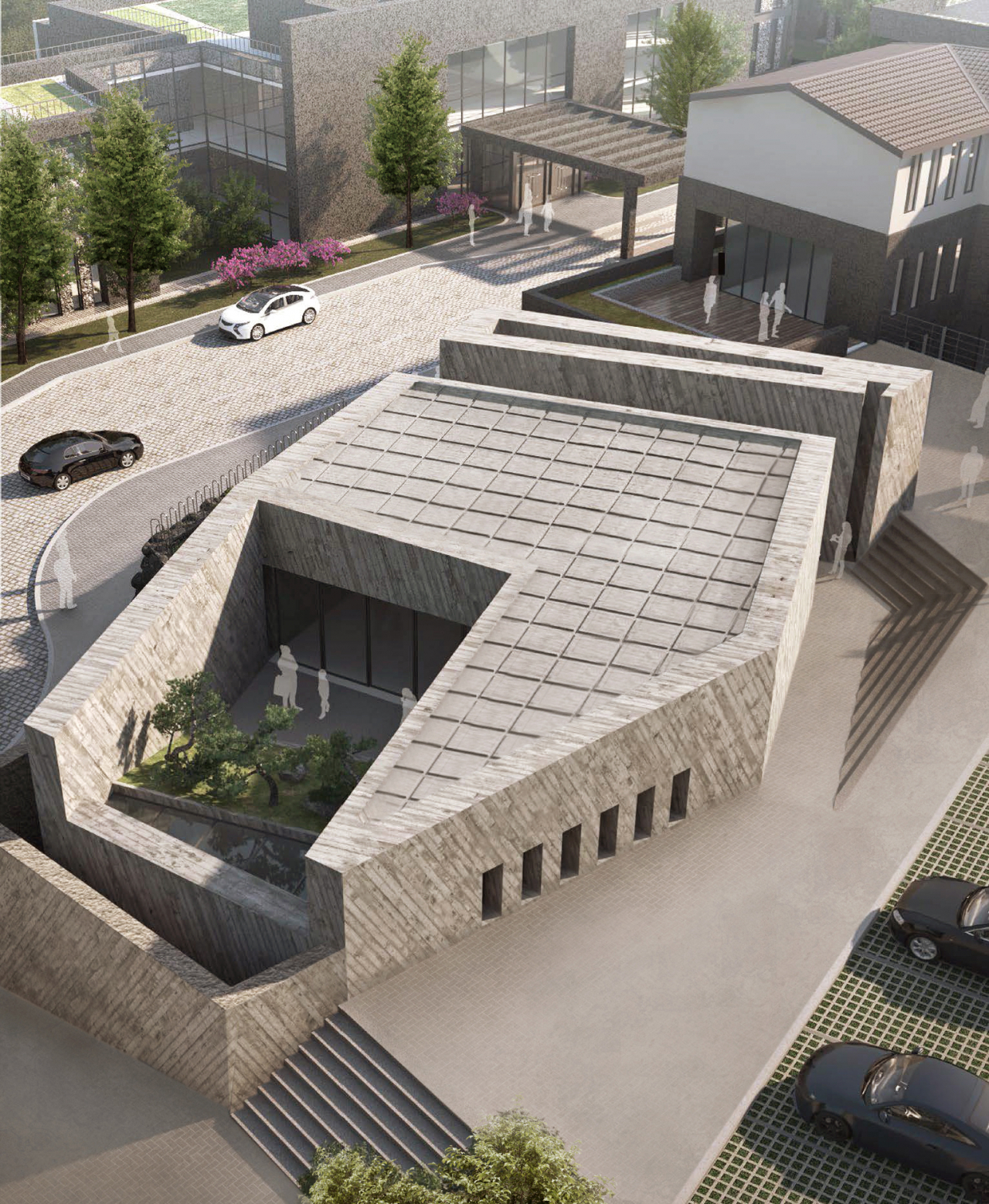[Herald Interview] Fernando Menis stresses importance of locality in architecture
Spanish architect is designing museum dedicated to artist Park Seo-bo on Jeju Island
By Park YunaPublished : April 25, 2023 - 09:37

When Spanish architect Fernando Menis came to Seoul in early 2020 for a lecture, he found himself stuck in the city as the sudden outbreak of COVID-19 pandemic halted all international travel. It was a totally unexpected situation, and the architect decided to walk around the city every day just to explore it without any particular intent.
“After I had breakfast at 8 a.m., I started to walk for five hours every day alone like a student. I (found) a lot of things beautiful. I discovered small cafes and the city was full of flowers in the spring,” Menis said during a recent interview with The Korea Herald on Jeju Island.
For three months, Menis stayed in a rental apartment in Hannam-dong, central Seoul. It was his first visit to Seoul and his friend helped him out during his stay, he recalled.
Exploring Seoul on foot and by taxi, he found the coexistence of high-rise buildings and small houses in such a compact city with a population of 10 million people, to be unique.
“Seoul is a very dense city, you know. You have towers, those like in New York. But if you go down, there are towns of small buildings. I think it is beautiful. You can go to the Han River and the mountains. You also have huge parks across the city. Seoul was very interesting for me,” he said.

Menis visited Jeju Island in March as an architect charged with designing a museum dedicated to Park Seo-bo, Korea’s leading contemporary artist. The museum is set to open in the summer of 2024 on a site next to the JW Marriott Jeju Resort and Spa in Seogwipo in the southern part of the island.
Situated on a 12,137-square-meter site, about 80 percent of the three-story building will be underground. The architect, who has pursued nature-friendly buildings, will make the most of the island's nature using a mix of concrete and basalt -- a type of volcanic rock found on the island.
“Maybe 80 percent of the materials (for the museum) will come from Jeju Island. We (architects) need to try to make healthy buildings for the planet,” Menis said, criticizing how buildings today are built without consideration for the natural environment of the building site.
“For example, you see buildings full of glass in Seoul -- many of which you cannot open the windows. But you see the same ones in Dubai, and you see the same things again in Helsinki when they have different weather conditions,” he said.
“I think, for an architect, what is very important is to understand where I am. That is the first thing to understand. You also must have an international mind too. If you are a local architect and do not have a global vision, you can’t filter the important things because you have too much information about the place,” he said.
Born in 1951, Menis studied architecture in Barcelona between 1981 and 2004. He is also a professor at the European University of the Canary Islands. He runs the Tenerife-based Menis Arquitectos, founded in 2004.


![[AtoZ into Korean mind] Humor in Korea: Navigating the line between what's funny and not](http://res.heraldm.com/phpwas/restmb_idxmake.php?idx=644&simg=/content/image/2024/04/22/20240422050642_0.jpg&u=)
![[Exclusive] Korean military set to ban iPhones over 'security' concerns](http://res.heraldm.com/phpwas/restmb_idxmake.php?idx=644&simg=/content/image/2024/04/23/20240423050599_0.jpg&u=20240423183955)



![[Graphic News] 77% of young Koreans still financially dependent](http://res.heraldm.com/phpwas/restmb_idxmake.php?idx=644&simg=/content/image/2024/04/22/20240422050762_0.gif&u=)
![[Herald Interview] Why Toss invited hackers to penetrate its system](http://res.heraldm.com/phpwas/restmb_idxmake.php?idx=644&simg=/content/image/2024/04/22/20240422050569_0.jpg&u=20240422150649)






![[Exclusive] Korean military to ban iPhones over security issues](http://res.heraldm.com/phpwas/restmb_idxmake.php?idx=652&simg=/content/image/2024/04/23/20240423050599_0.jpg&u=20240423183955)



![[Today’s K-pop] Ateez confirms US tour details](http://res.heraldm.com/phpwas/restmb_idxmake.php?idx=642&simg=/content/image/2024/04/23/20240423050700_0.jpg&u=)